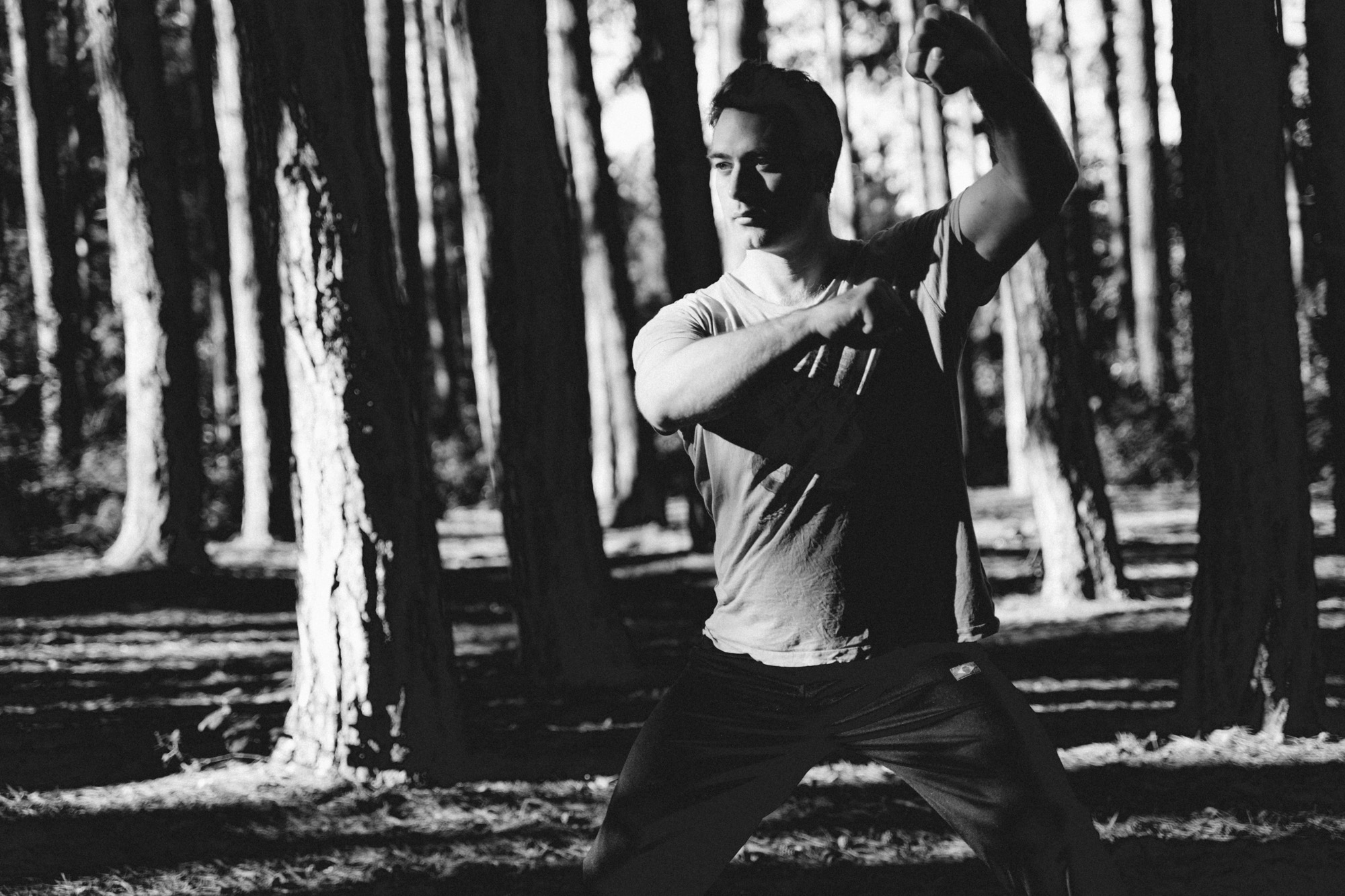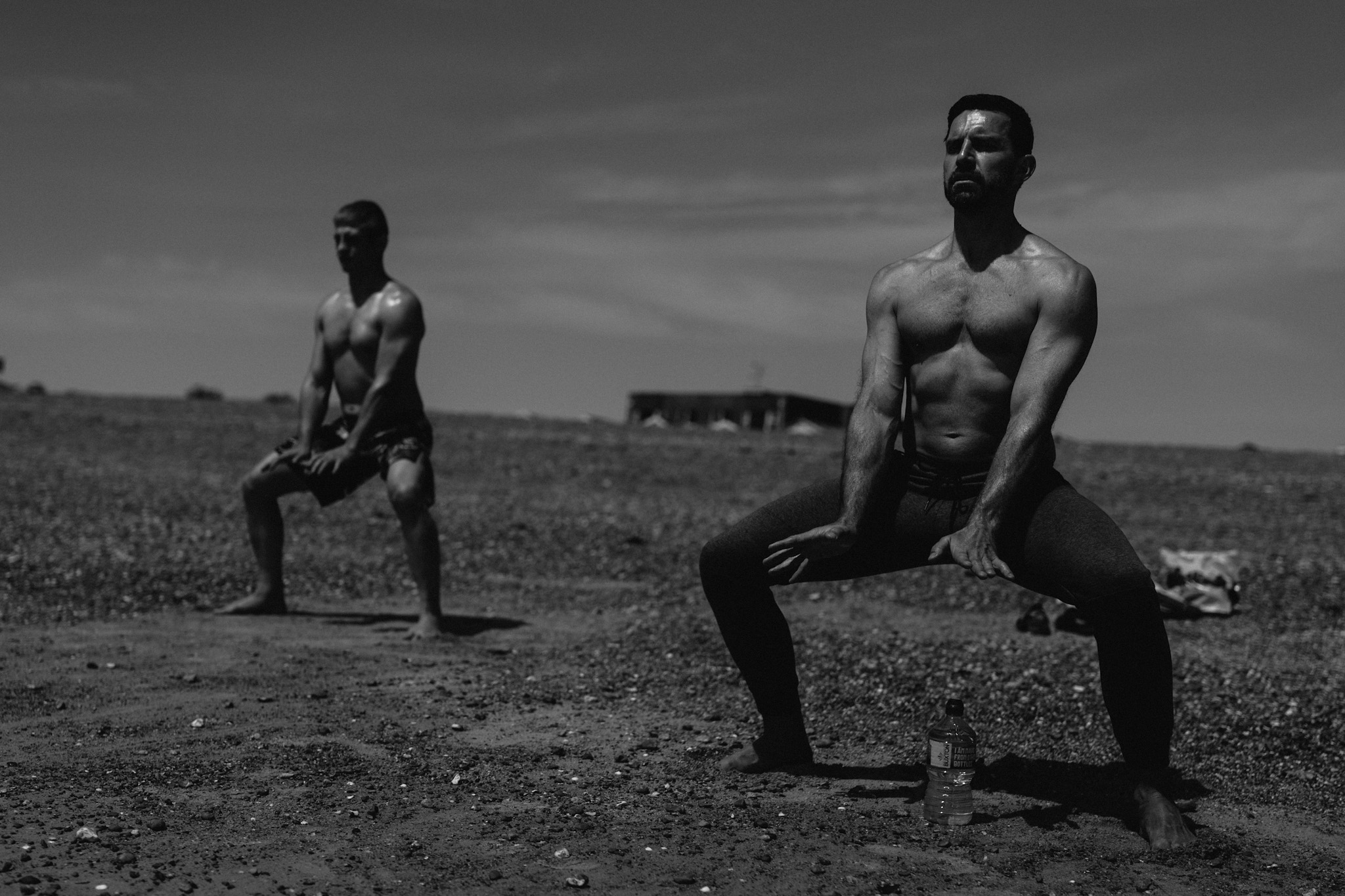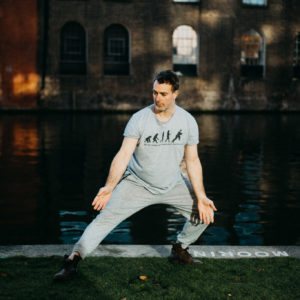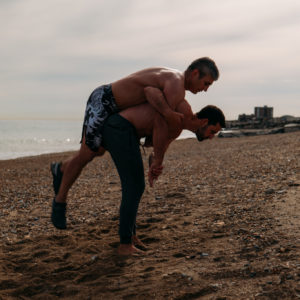£333.00
Description
Tai Chi Neigong (Internal Strength) is specialised training method for developing rare physical strength and power, powerful willpower and intent as well as the most subtle and sophisticated levels of bodily sensitivity.
This is done by optimising skeletal alignment, developing the capacity and potential of the connective tissues and muscles whilst also developing our ability to use the breath for strength as well as relaxation.
The circulation of blood and lymph is stimulated whilst the internal organs receive benefit from the deep diaphragmatic breathing which massages the viscera.
Practice leads to loosening of the joints which enable quicker movements and reactions.
The training includes meditative and mindful practices as part of the process, leading to a calm and tranquil mind.
Tai Chi Neigong not only improves our ability to deliver trained force in all directions, it also develops what some call the ‘iron shirt’, which is an incredibly tough body that can withstand tremendous punishment (see video below). This is useful for less skilled fighters or if we find ourselves attacked by a group, where some punishment is bound to be sustained,
These powerful results come from around 100 days of daily practice.
Reconstructing the fascia and connective tissue, which is a primary focus of the training, takes time so 3 months is an initial timestamp where we can expect to see very considerable benefits in this regard.
During the course of the practices you will be enhancing your awareness of your posture and movements, which are the naturally modified and developed so that we achieve optimal alignments that enable us to move perfectly in all directions, maintaining balance and stability.
During this process we learn to connect our bodies movements, through the all
Important ‘Dantien’ centre or core, so that all our movements express a unified effort of long chains of muscles and connective tissue.
Tai Chi Neigong training strengthens the long, integrated power chains of movement which involve the synergetic actions of several muscles and the associated connective tissues.
This produces a physique that can produce unusual power in all directions through one highly refined and unified effort, termed ‘one qi’ in the tai chi classics.
The optimal balance between muscular development and the development of the related connective tissues is achieved, allowing the integration of long chains of tissues into our power expressions and movements.
The fascial tissue that envelops the body including the internal organs plays a role in various important functions, including;
– distribution of force loads
– Connection and integration of muscles (abdominal and core)
– Connecting muscle to bones, known as tendons
– Stabilising joints, known as ligaments
– Providing a sense of feel or touch awareness, described as ‘listening force’ in the traditional tai chi literature
– Contractile/ load response – The golgi reflex is the most obvious
example of connective tissue responding to stimuli with
contraction.
– Wrapping nerves
– Allowing tissues to slide over one another
– Keeping the organs in place.
Using tai chi Neigong to work with the fascia and other connective tissues of the body develops our skill and ability to feel pressure on our body (essential for pushing hands skills, tai chi wrestling etc) as well as internally held tensions impeding our own movements. A stronger ‘bridge’ or connective tissue matrix developed through tai chi Neigong develops your ability to absorb forces as well as precisely deliver your own in all directions using. The internal monitoring of the conditioning of the body (interoseption) is also highly attuned, which along with performance enhance can be used to bolster holistic health.
Fascia has more sensory innervations than muscle making it the primary organ for feeling and detecting our own movement and that of an opponent. Tai chi Neigong development of this organ is the reason people report strange improvements in their pushing hands, grappling and other practical aspects of the art, despite sometimes not even doing partner based training.
The fascial training process in the Neigong involves the systematic development of the long lines of all power generating movement patterns. These fascial movements are loaded, pulled, stretched and wound through spiralling (silk reeling) patterns, providing stimulation for growth, conditioning and development.
Tai Chi Neigong also stimulates the movement and flow of the lymphatic system, which surrounds your entire body with lymph. BY enhancing the movement and flow of your lymphatic system you can improve your immune system and improve many health conditions. Inflammatory conditions are also improved. Better lymph movement can also have a positive effect on cognitive function, concentration, mood etc.
Throughout Tai Chi Neigong training we maintain a mindful, calm and responsive disposition which is helpful in reducing stress and enhance healing. The body is consistently training in deep, abdominal breathing which is known to enhance the tone of the ‘vagus nerve’ – leading to a shift in our state to being more calm, tranquil and feeling at rest.
At the end of each Tai Chi Neigong session a meditative exercises known as ‘Old Man Burning The Cinnabar/Making the Medicine’ is practiced.
This exercise begins with breathwork techniques and then seated meditation, using either mantra, visualisation or mindfulness. This completes a session and leaves you feeling exercised on all levels and in a state of very deep relaxation/stillness.
Tai Chi Neigong has long been kept completely secret in the major martial tai chi circles because of its effectiveness in producing so many desirable benefits, many of which have powerful martial application.
The fighting Tai Chi master Cheng Tin Hung stated directly that it “is the most important part of the art of Tai Chi Chuan”. He was one of only a few masters who had learned it and would teach it to his disciples. He was so dominant as a fight trainer (and Nei gong as the primary training) his students had a record in Hong Kong lei tai (full contact) matches of 31 wins from 32 fights.
The nei gong 内功 are specific forms designed to condition the body in various ways and are focussed on developing jin 勁 (martial power) as well as to make the body and mind strong and healthy.
The practice is based around two sets of exercises, a yin 陰 set and a yang 陽 set, each made up of twelve exercises. The yin 陰 set focusses mainly on strengthening the health of the body, building strength and endurance in the lower body, back and shoulders. They also concentrate on developing foundational jins 勁 such as pan jin 盤勁 (rooting energy) and peng jin 掤勁 (buoyant structural energy).
In contrast, the yang 陽 set builds dynamic tensile strength and trains the ability to release energy, fa jin 發勁, in various ways and in all major directions.
The Yin exercises are practiced on one day and Yang exercises the next. This gives practitioners a comprehensive method of training for their body, mind and technique on a daily basis.
Cheng Tin Hung identified three distinct stages in the development of nei gong 内功.
Inner and Outer in Unity
In the first stage of practice breath and movement are harmonized. It is a feature of this syllabus that generally no deliberate effort is made to co-ordinate the breath and movement, instead this is allowed to arise gradually and naturally as the body becomes more familiar with the movements. With regular practice breathing deepens, the diaphragm is strengthened and we can utilise the full potential of our respiratory system. Better breathing patterns can help you achieve deep states of relaxation as well as calm and relieve symptoms of stress. Insomnia is often cured or improved significantly with Nei gong practice.
Mind and Body in Unity
This is the stage where we have trained to be able to connect our minds to our body in an advanced way, leading to high levels of refined coordination in all movement patterns. From a martial arts perspective this improved level of movement control improves the execution of all our techniques. This is the stage at which consciousness of movement comes to fruition.
Heaven and Thought in Unity
This is said to be an impersonal state, where through the practice of Nei gong we have reached a state where we respond perfectly in accord to the requirements of the situation. Taoists would call it a state of Wu Wei, where your actions are executed effortlessly and without ego concerns. We could say it’s a kind of enlightened state. In sports performance this is known as the flow state.
The course design
Nei gong can’t effectively be learned through video alone. Corrections need to be made and things have to be discussed and talked through to get the most from the training.
For this reason my Neigong course has both the video instructional part and then the correction/discussion part with me either in person at a workshop or online.
Once you have begun to practice the exercises you can join the regular online workshop/discussion group to get assistance and guidance where required. Groups are held every fortnight.
Video part of the course
Detailed, clear and easy to follow instruction via 6 video tutorials, each one containing 4 exercises. This is the traditional approach to learning, practicing 4 for a while and then moving on when they are familiar.






Neil is a fantastic teacher, and I’ve really enjoyed studying Neigong with him. The instruction in the video is very clear and moves at a good pace. There are different camera angles and movements are repeated and narrated so that the nuances come across. Strongly recommended!
Having dabbled with Tai Chi Neigong, but in the absence of a good teacher and without any real consistency, it is refreshing to find a teacher of Neil’s caliber and experience. He has delivered a very accessible and transformative instructional video. He distills and delivers the essence of ancient Tai Chi Neigong practice in a very precise and easy to follow manner.
Through regular practice, this instructional video has helped me to foster a greater sense of inner peace, connectedness and fortitude in my own life.
I would wholeheartedly recommend this instructional video for anyone with an interest in Tai Chi Neigong and/or as means of self improvement as i feel that it is a powerful means of inner engineering.
This is a great instructional video of a very rare conditioning program from internal martial arts. In fact its the only one I have ever seen by a western or eastern student with detailed instructions in English. I work as a physiotherapist and can vouch for effects of this system in developing a strong balanced physique. It combats the detrimental effects of sedentary living and poor posture by strengthening the major muscle and fascial trains that meander through the body form a deep to superficial level. From a martial stand point it delivers a strong root in conjunction with focused coordinated movement essential for effortless striking and parrying. Despite practicing neikung for ten years I have found this video a great blue print to keep my practice on track. Neikung builds your body from the inside out so the mind body and breath work in harmony.
Hi so to all the people who wants to try this amazing tai chi nei gong system.. I can only recommend with fully of my heart. I have been doing it for 20 plus years. Love it and it’s the best I have ever try and been training in.
Highly recommend to buy and start your new journey too
This is a brilliant instructional video for anyone wanting to learn the neigong system and also for people wanting to improve / refresh their neigong training. Neil has a deep-rooted understanding of each neigong exercise and demonstrates / explains each one in a very clear and concise way. Even if you think your neigong training is at a pretty good level I would recommend this video. I’m sure it will identify areas where your technique can be improved upon and you can maximise the benefits to be gained from practicing this awesome system.
I have been a student, practitioner and sometimes teacher of this system for 3 decades now, having trained under Dan Docherty, Neil Rosiak and others. Nei gung is the holy grail of this system and is generally reserved for students that are able to fully dedicate themselves to the art. Anyone wishing to embark on this section of the tai chi syllabus should not take it lightly. Neil has a profound and in depth knowledge of the system. The instructions in this video are insightful, clear and to the point and will assist anyone wishing to develop and improve their nei gung conditioning. I can fully recommend this video as an aid to help support your training.
Neil’s deep expertise and joy for Taiji in all its expressions is rooted deeply in freedom and form. At the core, Nei gung opens the door to a world of possibilities within the body, self-awareness and beyond. Very grateful to Neil for opening this door for us. You will love and benefit from this video, Neil’s clear and heart-full instructions will guide you through.
Neil’s deep expertise and joy for Taiji in all its expressions is rooted deeply in freedom and form. At the core, Nei gong opens the door to a world of possibilities within the body, self-awareness and beyond. Very grateful to Neil for opening this door for us. You will love and benefit from this video, Neil’s clear and heart-full instructions will guide you through.
A comprehensive, and professionally produced video, clearly illustrating and explaining all the Nei Gong postures.
I found the video very helpful, as an aide memoire, and as motivation to be more attentive and focused in my practice – having noted some suspect habits in my own practice!
It was also helpful to have front and side views of the postures with voice over talking one through the movement and posture. Noteworthy, particularly for those new to these exercises, is the availability of support from Neil via email or mobile.
Neil is clearly a very experienced and competent teacher who has created a much needed and valuable learning tool.
The best way to learn tai chi is of course from a great teacher. There are very few who really know the depth and detail of tai chi as well as Neil. This video of the nei gung exercises is exceptional, i have found nothing like it anywhere else. It provides a hugely valuable reference. These conditioning exercises build a strong and solid foundation for tai chi. I am slowly building my practice, going back to this often to check both the basics of the movements but also the detail of alignment and breathing. This very helpful and great value.
For me this is more than helpful in so many ways. If you practice Neigong you will appreciate and perfect your practise with Neil’s help and guidance. He’s a pocket guide on woodland trips.
The Wudang style of tai chi is not only a complete and effective fighting system, as demonstrated by its success in full contact competition against other martial artists, it is also a subtle and sophisticated method to improve and maintain health and strength, both physical and mental. We are fortunate indeed that pioneers like Dan Docherty and Ian Cameron first brought this system to the UK in the seventies and eighties, both having studied in Hong Kong under the legendary Cheng Tin Hung (鄭天熊). I have practiced this style since the nineties, initially with Dan and subsequently with some of his senior students, and have maintained the practice of nei gong throughout this time.
Most recently, it has been a privilege to be taught and corrected by Neil, one of the handful of people (including Dan) that I can say it has been a life-changing experience to meet. Neil has not been content to pass on what he originally learned, but has tirelessly continued to deepen and extend his understanding of the art, returning to the source and studying under Cheng Tin Hung’s son, Cheng Kam Yan (鄭鑑恩). He has tested it in competition against fighters from many styles and shown its effectiveness as a martial art.
He is also interested in the science and physiology behind the style’s many health benefits. Of these I can speak personally – my nei gong practice has been the bedrock of my training, and the effects are palpable in terms of greater strength, stability and inner calm. Anecdotally, my martyrdom to annual doses of heavy flu stopped completely once I started practicing. Although no expert, my professional career was in medical research at the intersection of the nervous and immune systems, and we now understand enough of the relations between them, and the way that stress affects the latter and can be modulated by the former, for this to be plausibly attributed to the relaxing and calming effects of the nei gong exercises. It’s claimed effects on the ability to withstand heavy blows to the body was unintentionally tested by Neil himself, on an occasion when I foolishly walked into his very focused front kick while sparring, which floored me but left me unwinded and able to stand up immediately to continue. I only reflected subsequently that it would have taken me minutes to recover from this prior to practicing nei gong.
Neil’s commitment to teaching and transmitting this art extends to the production of very high quality teaching aids. While it remains true that the best way to learn any martial art is by personal instruction from a qualified teacher, the videos offered by Neil are an invaluable aide memoire, which communicate clearly, reliably and without undue mystique the essence of the techniques. They are beautifully produced, will not mislead, and are a valuable investment that will repay their cost many fold. I recommend them unreservedly, and in addition suggest that anyone interested in learning or developing this martial art seeks personal training with Neil. In a world full of over inflated egos, Neil is a modest and unassuming person of genuine attainments who truly lives the Dao.